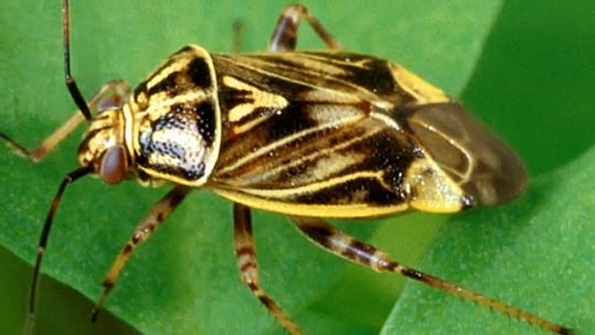
“Considering the questions about the linkages between exposure and effects, it is even more important for agriculture to have assurance that EPA held these studies to the same level of transparency and scientific rigor they require of registrants before using the studies to take such significant regulatory action,” said Reece Langley, the NCC’s vice president for Washington operations.
January 5, 2016

Is EPA giving environmental advocacy groups a “pass” on submitting well-researched scientific data while continuing to hold pesticide registrants to the same standards they’ve always had to meet to win approval for new products?
That’s a question the National Cotton Council is raising in comments it submitted on EPA’s proposal to revoke the tolerances for the pesticide chlorpyrifos, which is used to control a variety of insects in cotton and other crops.
The 9th U.S. Circuit Court of Appeals has ordered EPA to decide whether to place an effective ban on agricultural uses for chlorpyrifos by the end of 2016. The National Cotton Council and other farm organizations say EPA is considering data that has not been submitted to its usual rigorous standards of accuracy.
“Considering the questions about the linkages between exposure and effects, it is even more important for agriculture to have assurance that EPA held these studies to the same level of transparency and scientific rigor they require of registrants before using the studies to take such significant regulatory action,” said Reece Langley, the NCC’s vice president for Washington operations. (To read the NCC’s comments, go to www.cotton.org/issues/2015/chlor.cfm.)
Chlorpyrifos, which is sold under the trade name Lorsban and other names, can prevent yield loss and quality loss by controlling multiple insect pests, including aphids, lygus or plant bugs and whiteflies. The latter can contaminate cotton lint with a sticky secretion that interferes with textile processing.
'Columbia study'
The comments noted that some of the studies being used in the assessment, specifically the “Columbia study,” have numerous deficiencies and lack transparency.
“The NCC supports the protection of human health, but has concerns that EPA is inferring harm beyond the scope of scientific data,” said Langley. “The NCC urges EPA to continue the historic path of reliance on credible scientific data and require all studies submitted to meet the same requirements as those required of registrants.”
EPA has notified the court they plan to release a final rule in Dec. ’16.
The Council has also submitted comments on EPA’s draft human health and ecological risk assessments for the registration review of a group of 35 different pesticides known as sulfonylureas and other identified chemicals.
The NCC’s comments, which can be seen at www.cotton.org/issues/2015/fourchem.cfm, are specific to four chemicals, which each have a significant impact on cotton production: thifensulfuron-methyl, trifloxysulfuron-sodium, tribenuron-methyl and rimsulfuron.
Burndown herbicides
Thifensulfuron-methyl, tribenuron-methyl and rimsulfuron are used in cotton production as a burndown herbicide to control winter annual broadleaf weeds such as henbit, chickweed, small wild radish and curly dock. These product labels also allow for applications during late fall or winter in order to minimize weed populations requiring clean-up prior to spring planting.
Trifloxysulfuron-sodium is used as a post-emergent, over-the-top herbicide to control annual broadleaf weeds.
With weed resistance being an ongoing issue for crop production, the NCC’s comments noted that it is vital to have multiple herbicides with different modes of action available to producers across the United States.The NCC urged EPA to include in its review the weed resistance management benefits for each of these chemicals.
For more on the National Cotton council, visit www.cotton.org.
About the Author(s)
You May Also Like





